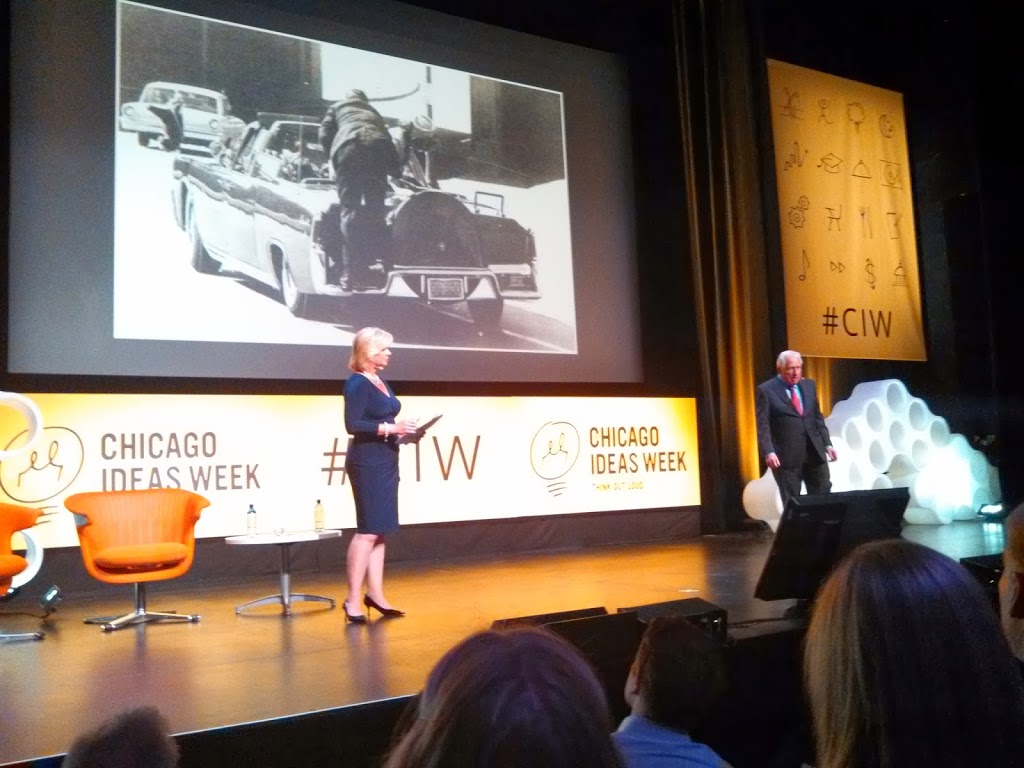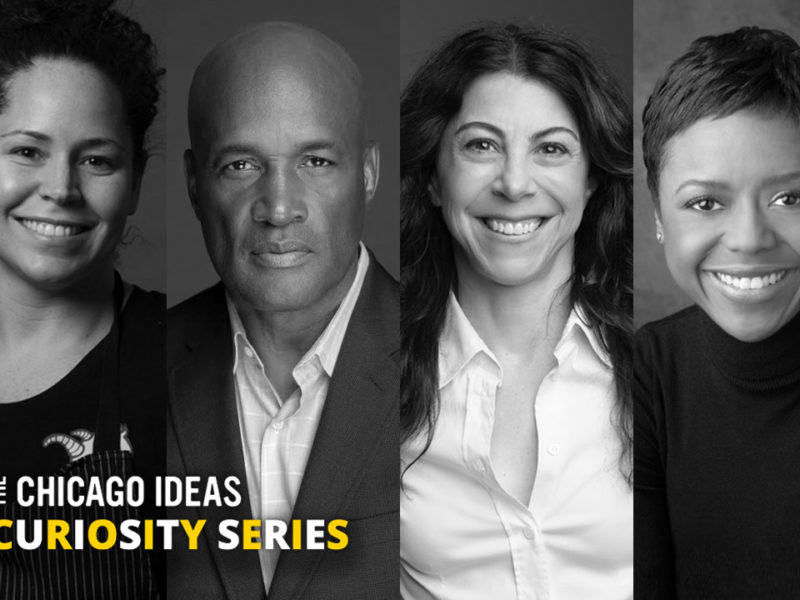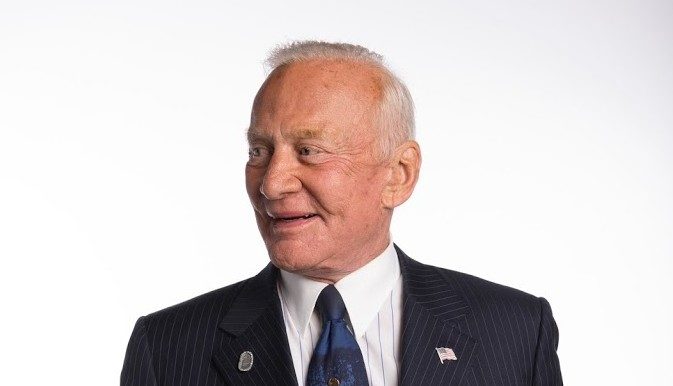
CIW 2013 Closes by Remembering History through the Eyes of Those Who Lived It
 |
| Clint Hill, a former Secret Service agent, jumped onto former President John F. Kennedy’s car and tried to shield him and the first lady during the assassination. |
The Holocaust, the Kennedy assassination, the end of racial segregation and mankind’s journey to the moon – Chicago Ideas Week (CIW) attendees relived some of the best and worst moments in human history during the sold-out Witness Talk at the Museum of Contemporary Art’s Edlis Neeson Theater on Oct. 20.
Among the speakers were Estelle Laughlin, author and Holocaust survivor; Cheryl Brown Henderson, daughter of the plaintiff in the landmark Brown v. Board of Education case; Bryony Evens, the literary agent who discovered Harry Potter; Clint Hill, the former Secret Service agent who was with former President John F. Kennedy during his assassination; and Buzz Aldrin, the legendary astronaut and second man to ever walk on the moon.
 Peter Sagal, the host of the evening and of NPR’s Wait Wait … Don’t Tell Me!, said their stories resonate with us because they continue to impact our future.
Peter Sagal, the host of the evening and of NPR’s Wait Wait … Don’t Tell Me!, said their stories resonate with us because they continue to impact our future.“I think there is no greater hunger among human beings – the hunger for love, the hunger for food – than the hunger to know, what’s going to happen next?” Sagal said.
And for Laughlin, remembering history is the best way to guard against future mistakes. Born in Warsaw, Poland, Laughlin was just 10 years old when the Nazis invaded her country, forcing her family and about 400,000 other Jewish people to live in a ghetto the size of Chicago’s Grant Park.
“All the rights were taken from us,” she said. “Books were burnt. Schools were closed.”
But even in this inferno, Laughlin said she and her neighbors never gave up. They put on shows to encourage one another, kept books in secret to read to their children and eventually organized the Warsaw Ghetto Uprising.
Today, Laughlin lives in Chicago and volunteers at the Illinois Holocaust Museum and Education Center. She said understanding is a responsibility.
“I am so grateful for [the Holocaust museums’] existence because they prove that history remembers, and we must pay attention if we are to find our way out of moral darkness,” she said.
 |
| Peter Segal of NPR’s Wait Wait…Don’t Tell Me! gets photographed backstage. |
History also shows collective action can make a difference, as Henderson shared her father’s struggle against injustice. In 1951, in what would became a landmark Supreme Court case, Oliver Brown and 12 other Topeka, Kansas, parents filed a class action suit against the city’s Board of Education for its racial segregation policy.
A boxer turned minister, Brown didn’t live to see the legacy of his actions play out over time. But the case set the precedent for dismantling legal racial segregation, galvanizing the civil rights movement into a full revolution.
“It is a pivot for everything that came after,” Henderson said.
As president of the Brown Foundation, a nonprofit dedicated to advancing education equality, Henderson encouraged the audience to tap into the power of collective action.
“Any time you see something, any time you see the smallest injustice, it’s time to do that,” she said. “There are people who think and feel just like you do. Pool them together.”
Former Secret Service agent Hill saw a violent injustice firsthand.
Mysteries and conspiracy theories have long surrounded the Kennedy assassination. but Hill – whose job was to protect Kennedy’s wife, Jackie – walked the audience through Kennedy’s final hours campaigning in Texas.
On Nov. 23, 1963, Hill said the presidential motorcade was cruising down a street when he heard an explosive noise – He leapt onto the president’s car to shield the Kennedys, but the president had already been dealt a fatal blow.
About 50 years later, many Americansbelieve the assassination involved more than one man. But Hill said all three shots were fired from the same location, by the same individual, using the same rifle.
“That’s what we call the end of the age of innocence,” Hill said.
 |
| Legendary astronaut Buzz Aldrin shares how he walked on the moon. |
If the Kennedy assassination was a time of national grief, Apollo 11’s journey to the moon was a moment of national pride and scientific firsts. In his new book, Mission to Mars, Aldrin said the U.S. needs to target the red planet for its next landmark voyage.
“The greatness that we exhibited in the 60s and 70s brought so much to this country in the realm of innovation,” he said, wearing a space tie and socks with planets on the ankles. “So it is crucial for us to be able to maintain that kind of greatness.”
Though he believes Mars is the answer to maintaining America’s edge in space exploration, Aldrin said he wouldn’t be on a 2040 flight to the red planet, even if his health permits it.
“I’m not a long distance guy, whatever it is,” he said, causing the audience to laugh.
As CIW 2013 as a whole drew to a close with the evening event, attendee Emily Cohen said she enjoyed the program.
“It’s a nice kind of wrap up,” the 28-year-old said. “It’s a reminder that there are a lot of lessons to be learned in history.”
*Check out The CIW Ideasphere for more stories and become a member today to take advantage of special events year-round.*
_____________________________________
Written by: Jia You
Photography by: Sara Serritella
___




